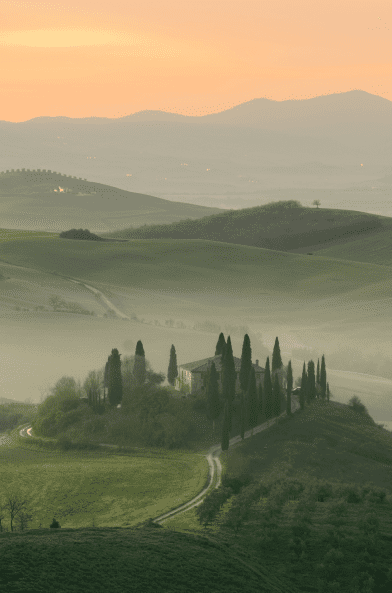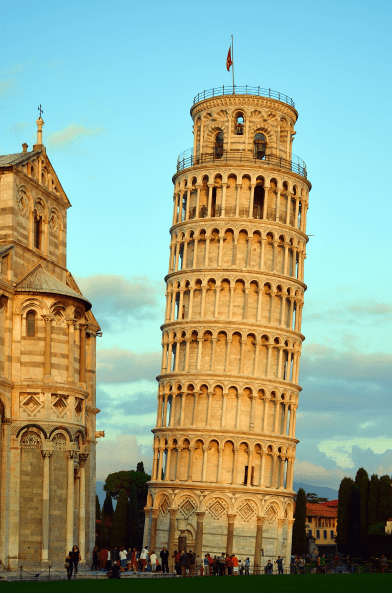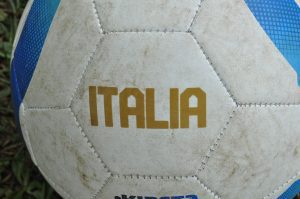
Italy
Rome, Amalfi Coast & Sicily
21 Days
Workation » Best Workation Locations and Why You Should Visit Them » Italy Workation – Working and Vacationing in Italy » Best Italy Workation Packages 2023 » Bologna, Tuscany, & Venice Workation Package
Rome, Bologna, Tuscany, Venice Package
Your 21-day Italy Workation package takes you on an incredible journey of ancient ruins, empires, cuisine, and the balance between work and life. Visit medieval towns, enjoy local traditions, and explore how you want as you discover the essential spirit of Italy.
Highlights
- Visit St. Peter’s Basilica and the Vatican to witness the masterpieces of Michelangelo
- Tour the Uffizi Gallery to enjoy some of the Renaissance’s most notable artwork
- Enjoy a taste of the typical dishes of Bologna and Emilia Romagna during a food tour
- Taste the joys of Florence with a guided gelato tour
- View the iconic image of Pisa’s Leaning Tower
- Experience a unique guided tour of Venice to see the notable and missed history
- Discover the ancient history of Rome from the empire to the Renaissance including the catacombs
- See Michelangelo’s image of David
- Visit the house of Juliet in Verona, made famous by Shakespeare’s Romeo and Juliet
- Feel what it’s like to drive a Ferrari in a semi-professional F1 simulator in the Ferrari Museum
What’s included
Customizable itinerary
This is a sample itinerary to inspire a personalized trip designed with your travel specialist
1. Friday - Settle into Rome
The ancient history of Rome runs under the city like tree roots, protruding around medieval and contemporary architecture in images like the Colosseum, Roman Forum, and Pantheon. When you arrive at the airport, your Workation representative will meet you and lead you to your new accommodations that are pre-verified to have the amenities you need to enjoy your time balancing work with the thrills of discovery.
Depending on your neighborhood, you may notice the flower stalls filling the air with the smell of roses or wine bars where locals enjoy a glass in the afternoon. Take your time getting to know your new setting to enjoy the essence of the city and greater Italy.
Focus: Arrive in Rome, settle into your accommodations and spend 10 minutes exploring your block. What does it sound, smell, and feel like? Notice the types of shops in the area. What becomes your favorite sensory detail at that moment?
Suggestion: For a great introduction to Rome, you can try a typical Roman pasta like cacio e pepe, made with cheese, noodles, and ground black pepper.
2. Saturday - Explore St. Peter’s Basilica City and Museums
With a full day to view Vatican City, you can enjoy an immersion into the opulence and devotion from St. Peter’s Basilica to the world-celebrated galleries. It is the smallest independent state in the world, yet is also a treasure trove of masterpieces. Visiting with a guide will open new dimensions of information and unlock beauty you may have otherwise missed.
In the Basilica, the dome stretches nearly 400 feet above the floor and Michelangelo’s Pietà features the remarkable detail for which the artist was known, displayed in the pained look and sinewed arms of Jesus while carried by the Virgin. Once in the museums, you can continue searching for the masterpieces of Michelangelo, crowned by the Sistine Chapel, where the stories of the Old and New Testaments line the walls before you have the chance to look at the ceiling.
Focus: Climb to the top of Michelangelo’s dome for a view over Rome. What do you hear from the top? How does it make you feel?
Suggestion: Don’t miss the frescoes painted by the likes of Botticelli and Signorelli on the walls, often overshadowed by the colors and images on the ceiling.
3. Sunday - Visit the Ancient and Renaissance Monuments
Ancient Rome no longer feels worlds away and becomes tangible during your tour of the remaining elements of the former empire. A guide can help you explore the different elements and layers of the ruins with interesting information and access not readily available to visitors.
You can start at the Colosseum to visit the massive stadium that held up to 50,000 people in its prime dating back to 80 CE. No matter how many photos you have seen, nothing will prepare you for the size of the structure and the thrill of entering the arena where gladiators once battled.
Focus: Find a cafe at the end of your tour that looks over the ancient world. Take five minutes to think about the fact you followed in the footsteps of gladiators and emperors. What stood out to you most and why? Write it down.
Suggestion: The neighborhood of Monti next to the Colosseum is known for its restaurants and cafes. After your tour, visit the neighborhood for a meal or a snack to enjoy local Rome.
4. Monday - Visit Tivoli
With your first day of work in Rome, focus the beginning of the day on setting up a ritual that will help you ease into work. Perhaps you choose to stretch, grab a coffee, or take five deep breaths. By performing the task with intention, it then gives you a better method for starting work and keeping to your necessary schedule and projects.
After the workday completes, set another ritual for dividing the day that will help you recognize work is complete and you can enjoy your afternoon tour of Rome. Beyond the ancient ruins, you can explore with a guide to see the Spanish Steps, Trevi Fountain, Pantheon, and Piazza Navona. The Fountain of the Four Rivers in Piazza Navona is a masterpiece by Bernini who used the four figures as allegories for the four largest rivers known to the world at that time.
Focus: Concentrate on the detail in the Fountains of the Four Rivers and the allegory each one holds. Memorize the faces of the four statues. Close your eyes. Can you recall the details? Open your eyes. What details did you miss?
Suggestion: If you have time, visit the Church of Sant’agostino, near Piazza Navona. It even has a fresco by Caravaggio.
5. Tuesday - Tour the Catacombs
Start work early so you have enough time after you have completed your projects for the day to travel into the hills outside of Rome and reach Tivoli. The small town was once a summer getaway for the Roman aristocracy. The city stands perched on the limestone ridge overlooking the River Aniene.
Once there, you can start exploring with a visit to the Villa d’Este Gardens. One of the best examples of opulent Italianate landscaping, the garden is actually a collection of spaces decorated with statues, fountains, pools, cascades, and terraces. It creates an elaborate and luxurious atmosphere with splashing water contrasting the water reflecting the surrounding greenery. Each corner of the garden feels like its own elaborate section rather than part of the collective.
Focus: Listen to the sounds of the water when visiting Villa d’Este. How does it make you feel? Have you been holding your breath? Is it peaceful? What garden are you most drawn to?
Suggestion: Slow down in Villa d’Este and take your time looking at the waters, waterfalls, grottos, and fountains at your pace.
6. Wednesday - Enjoy the Flavors of Rome
The history of Rome stretches thousands of years and the Catacombs are another layer of the city’s heritage. After work, you can visit the edges of the ancient city to find the mazes of tombs hidden beneath some of the oldest churches in Italy.
The Catacombs of St. Callixtus travels for 12 miles along the famous Appian Way and houses martyrs, popes, and an estimated 500,000 Christians at its peak. Visiting with a guide can explain more of the important early Christian iconography decorating the tombs, especially those of important figures like noble families or church leaders.
Focus: What do the ancient symbols remind you of? Do they tell you a story? Do the catacombs spark a feeling in you? Write that feeling down when you return to your accommodations.
Suggestion: The catacombs of Priscilla on the Appian way are home to the oldest known image of the Virgin Mary.
7. Thursday - Travel to Ravello
Florence is a small but mighty city filled with the wonders you’d expect from a destination known as the “Cradle of the Renaissance.” The train from Rome to Florence is approximately an hour and the fast trains in Italy have wifi giving you the option to work during your transfer. Your Workation representative will meet you at your accommodation in Rome and travel with you to the train station to help you find the right time and departure point.
Once in Florence, you can feel the difference in the atmosphere with medieval and Renaissance architecture feeling much more confined with a labyrinth of streets circling the iconic dome of the cathedral. You will once again have a Workation representative to take you to your new accommodations in the historic center. Walk around and enjoy the views of the Arno River from the Ponte Vecchio or the vibrant sounds of the crowds enjoying a drink in the piazza in front of the cathedral.
Focus: Make it to the top of Piazzale Michelangelo in time to hear the Gregorian chants at the Church of San Miniato al Monte. Lock your phone, close your eyes. How does it affect you?
Suggestion: The Gregorian Chants take place at 5.30 pm in the summer and 4.30 pm in winter.
8. Friday - Taste the Local Food
With your ritual in place, you can easily dive back into work even though you have traveled to a new city. After work, you can start exploring Florence, a place where walking the streets feels the same as walking through a world-class museum.
If touring with a guide, you may visit the neighborhood of San Lorenzo, where vendors showcase leather goods and clothing deals beneath the dome of San Lorenzo Church. Michelangelo designed the interior chapel that housed the Medici family while Brunelleschi planned the greater church. In the Accademia, you can further see the beauty and masterful work of Michelangelo when viewing the David, the iconic statue with replicas across the city but whose intricate detail makes for an unforgettable viewing experience.
Focus: Study the Church of San Lorenzo for five minutes. Close your eyes. What sounds do you hear? What details of and around the church do you remember?
Suggestion: The Accademia Gallery also has a collection of priceless instruments including a Stradivari violin.
9. Saturday - Travel the Towns of the Amalfi Coast
With the entire day to enjoy life, you can start with a visit to the Uffizi Gallery, one of Italy’s preeminent museums. The stunning collection demonstrates the evolution of art from the 13th to the 18th centuries, including works by masters like Piero della Francesca who notably painted the Duke and Duchess of Urbino with lifelike qualities, including the aristocrat’s curved nose.
After visiting the Uffizi, you can taste Tuscany with a cooking class. Your chef can teach you the secrets of regional cuisine that focuses on local and seasonal ingredients, as well as using as few ingredients as possible to get the best flavor. You may make a three-course meal learning the art of using garlic with intention, the delicacy of tomatoes, and the alluring flavors of seasonal zucchini when making dishes like pappa al pomodoro or pappardelle al cinghiale.
Focus: Focus on the sound and smells in the kitchen. Do the aromas smell the same as the Italian food back home? Does it affect your stomach, making you hungry and eager to taste? How does your body change as it grows hungry? Can you tell the difference?
Suggestion: Take the recipes home with you to make each dish after your Workation package is done.
10. Sunday - Discover Pompeii, Herculaneum, and Vesuvius
The weekend is a great time to explore the depths of Tuscany and a visit to the cities of Pisa and Lucca will open you to new ideas about the intertwining histories between the former city-states. Pisa was once a powerhouse of naval activity and by visiting the Piazza dei Miracoli, you can see what the former wealth bought the citizens in the form of the marbled cathedral, baptistry, and infamous Leaning Tower.
The narrow columns that circle the exterior on the tower and cathedral are part of the Pisan Gothic architecture but the city is better known for the tower’s near four-degree lean. In Lucca, you can start by exploring the city walls to view the historic and dramatic architecture that protected the city from invaders for centuries.
Focus: Step inside the cathedral. Is it quiet? Are candles burning in the votive? What can you smell? Does the atmosphere affect how you connect to space?
Suggestion: Don’t miss Campo Santo when in Pisa, a space rumored to have been built on soil brought back from the Golgotha during the Fourth Crusade.
11. Monday - Find Paestum
Siena captures the true essence of Tuscany, with winding medieval streets and endless masterpieces in a city that once rivaled Florence for artistic and military supremacy. After work, you can take the short and scenic train ride to Siena for a fantastic exploration of the 12th, 13th, and 14th centuries.
The Cathedral reflects the height of Siena with white and black marble striped against the sides and rosy marble decorating the facade. Reliefs and statues create a thrilling artistic feature above the entrance and the interior possesses artwork by the likes of Pisano, Bernini, and Ghiberti, as well as 56 mosaic panels inlaid in the floor and sharing stories of mythical and Biblical history.
Focus: Don’t look at your phone for 10 minutes. Find different mosaics on display in the cathedral. Look at the different stories they share. Which one speaks to you and why?
Suggestion: Visit the frescoed room of the Hall of Pilgrims in the Complesso Museale di Santa Maria della Scala to find breathtaking works of Pietro and Bartolo.
12. Tuesday - Visit the Island of Capri
Travel to San Gimignano after work to find a pristine medieval town on the top of a hill that once stood on the main route for pilgrims visiting the Vatican or traders moving through with saffron. Over 10 of the original 70 towers that once created the skyline of the city continue to stand. Simpy walking through the medieval streets and finding views over the quintessential Tuscan landscape provides enough of a reason to visit and enjoy the local charm.
The Romanesque cathedral was built between the 11th and 14th centuries and has Renaissance frescoes painted by the likes of Ghirlandaio and Fredi. Find the restored representations of the Old Testament by Fredi to see how the artist reflected on the movement and interpretation of the stories.
Focus: Climb a tower in San Gimignano. What do you see from the top? What do you hear? Keep your eyes away from your phone.
Suggestion: Try the Vernaccia wine when in San Gimignano for a tasty treat.
13. Wednesday - Tour the City of Naples
When work ends, treat yourself to the quintessential tasting experience in Florence with a gelato tour. Your guide will be an expert, not only on how to make gelato but also the best gelaterie in the city. You may learn how to differentiate between gelato with additives made non-traditionally versus those made with customary techniques and natural ingredients, even when exploring unique flavors.
Try strawberries known as fragola or the popular chocolate chunk known as stracciatella. No matter your preferred flavor, you can find the best-tasting gelato in the city and compare based on what they offer, the size of your scoops, and ultimately how it tastes.
Focus: What is your preferred flavor? Is it the same as back home or something new? What makes it feel different or nostalgic?
Suggestion: Take advantage of the multiple flavors you can have in a single serving.
14. Thursday - Travel to Catania
You will once again travel and can choose what time you wish to leave the city. The train to Bologna has wifi, giving you the option to leave early and work during your transfer or stay in Florence until the end of the work day. Your Workation representative will take you to the train station whenever you’re ready.
Once in Bologna, you can celebrate the city known to have some of the best food in Italy by taking a guided food tour. As you settle into Bologna, you can find the medieval architecture prevalent in the historic city center, crowned by the figure of a bronze Neptune on a fountain in the joint piazzas Maggiore and del Nettuno. Follow your guide through the remarkable flavors of the city and the surrounding region of Emilia Romagna by first visiting a small trattoria that fills with the smell of Bolognese.
Focus: Focus on the rich smell of bolognese in the restaurant. How does the aroma make you feel? Does it make your mouth water?
Suggestion: Don’t be afraid to tell your guide or the chefs that you love the food. You can even ask for the recipes.
15. Friday - Explore Catania’s Market
After work, you can visit the town of Modena to find wide streets covered in arcades and large piazzas surrounded by a combination of palaces and gardens. The opulent and lovely architecture resembles a Renaissance haven designed and funded by the Este family.
Walk through Piazza Grande and stand beneath the richly carved portal and columns of the cathedral before visiting the Ferrari Museum. Even if you are not a car fan, you can enjoy the exhibit hall that shows cars like art before stepping inside the semi-professional simulator for a taste of thrilling speeds circling some of the world’s most famous racetracks.
Focus: Listen to the engines and feel the power. What details stand out to you? When in the simulation, do you feel like you are really on a track?
Suggestion: You can also test drive a Ferrari on an actual track.
16. Saturday - Travel to Taormina
Before traveling north to Venice, you will spend time at a villa enjoying the flavors and texture of balsamic during a tasting. Grape vines will wind along the landscape leading across the open plains of the region. The villa may have a history dating back centuries and family traditions stretching equally as long.
The methods for making balsamic have changed little with heritage often playing a part in the way the final result tastes after months of aging. Your Workation representative will take you to the train station after your tour where you will board your train for Venice and find the comforts of your new accommodations waiting in the floating city.
Focus: When sampling the balsamic vinegar, what stands out the most? What is your preferred combination?
Suggestion: Balsamic can be aged just like wine. Find what flavors you like most and why.
17. Sunday - Visit Mt Etna
Venice is a gorgeous city that expresses charm and romance, no matter the season. With a full day to explore the iconic monuments and hidden neighborhoods, you can explore with a guide for a better understanding of the history and culture connected to the beautiful Renaissance palaces seemingly emerging from the waterways.
Across the peninsula from the Doge’s Palace you can find Santa Maria della Salute, one of the most photographed churches in the city. The Baroque design and vaporetto landing at the entrance create a unique exterior perspective while the interior brings together a soaring dome and paintings by master artists like Tintoretto. You can also visit the marble design of Scuola Grande di San Rocco, where Tintoretto completed a cycle of impressive paintings.
Focus: Pay attention to the use of light and shadow in Tintoretto’s decorations of San Rocco. What stands out to you and why?
Suggestion: If you want to take a gondola ride today, find a point far from the Grand Canal for a more authentic, quieter, and scenic ride.
18. Monday - Learn the Art of Sicilian Cuisine
Murano Island can feel like Venice in miniature. Much like the iconic city, Murano is not a single island but is instead a collection of islands connected by arching bridges that allow for passing boats. Murano feels much quieter and moves at a relaxed pace with artisans crafting glass and demonstrating their skill passed down for nearly a millennium. At the Glass Museum, you can see the history of glass around the Mediterranean before Venetians honed their skills and techniques to become the preeminent glassblowers at the time. The Murano glass factories demonstrate the workshop experience with glassblowers creating high-quality products with a history dating back to the 12th century.
Focus: What piece catches your eye in the glass museum? After learning more about the art of crafting glass, did you change your mind about what catches your attention and why?
Suggestion: If you have time, take part in a glassblowing workshop. It’s not often you get the opportunity.
19. Tuesday - Enjoy the Day for You
After work, you can travel to Verona for the afternoon. The easy ride is beautiful with open landscapes that end to reveal the ancient Roman stadium crowning Piazza Bra. The city is a classic medieval time capsule with touches of romantic atmosphere related to Shakespeare’s enduring story of Romeo and Juliet.
On either side of the River Adge, you can find beauty and history but the most notable reason for visiting is often the home of Juliet. The tunnel leading into the courtyard is peppered with notes addressed to the story’s heroine asking to be blessed in love, relationships, or grace. The Old Castle on the river’s banks is an impressive display of power and makes for a great focal point if you choose to walk along the water before returning to Venice.
Focus:Write a note to Juliet. What will it say? What will you choose to mention and why?
Suggestion: If you don’t want to visit Verona, spend time at Libreria Acqua Alta bookstore instead.
20. Wednesday - Visit Ancient Siracusa
Finish work and enjoy the time you have left on your final full day in Italy with a cicchetti tour. The dishes are often related to tapas in that they are small plates accompanied by a typical local drink favored by Venetians, such as wine or an Aperol spritz. Follow your guide through the city’s rich and lively neighborhoods to visit the most active and inventive cicchetti bars.
Don’t be afraid to sample something new as you find traditional flavors like fried and skewered octopus or potato croquettes. Enjoy meatballs or mini sandwiches with each new dish demonstrating a new perspective, concept, or focus on the heritage of the ingredients in the city revealing typical occupations or historic trade routes. The food you eat in Venice is much more than just a meal; each dish tells its own story that now also includes yours.
Focus: Find out what story each ingredient tells as you taste it. Where did it come from, how long has it been a part of cicchetti, and how much does it affect the overall flavor of the compiled dish?
Suggestion: The oldest cicchetti bar in Venice is Cantina do Mori, which opened in 1492.
21. Thursday - Travel Home
Depending on the time of your flight, you can start work early in the morning and take your time finishing your projects. Gondolas may careen through the narrow and quiet back canals, vaporetti will zoom down the Grand Canal, and the sunlight may reflect off the marble palaces. Your Workation representative will meet you at the accommodations for the last time and lead you to the airport for your flight home bringing an end to your Workation package.
Focus:Before you leave for the airport, write a list of the top five experiences you had during your Workation and explain why each one connected with you.
Suggestion: The Venice airport is one of the largest airports in Italy and will give you better flexibility than trying to fly back out of Rome or a different regional airport like Milan.
real conversations with
Workation Experience

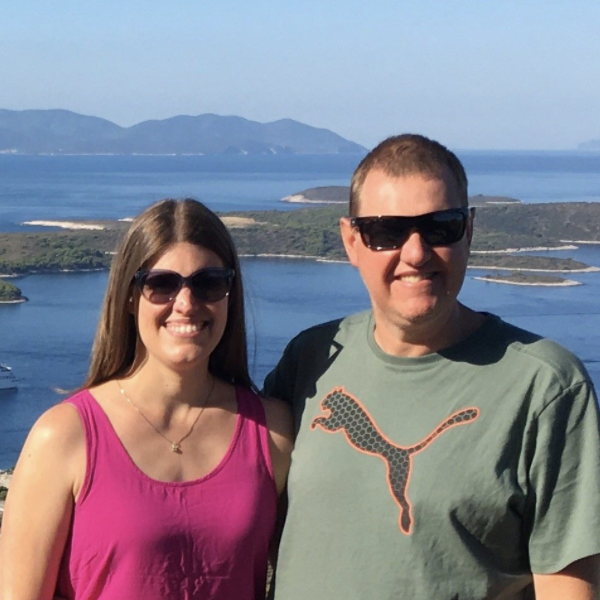


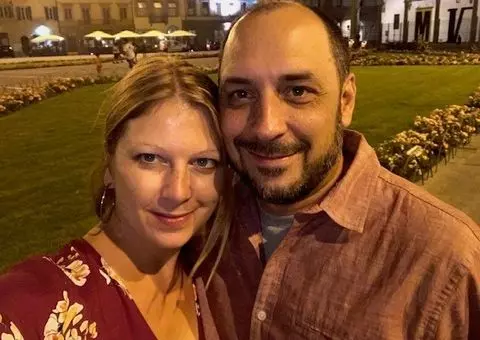
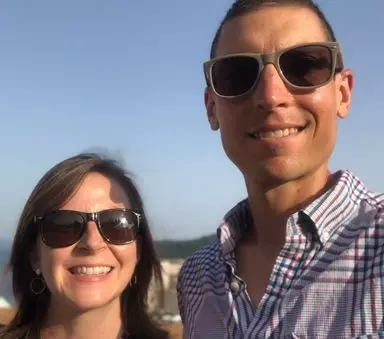
View More Packages...



